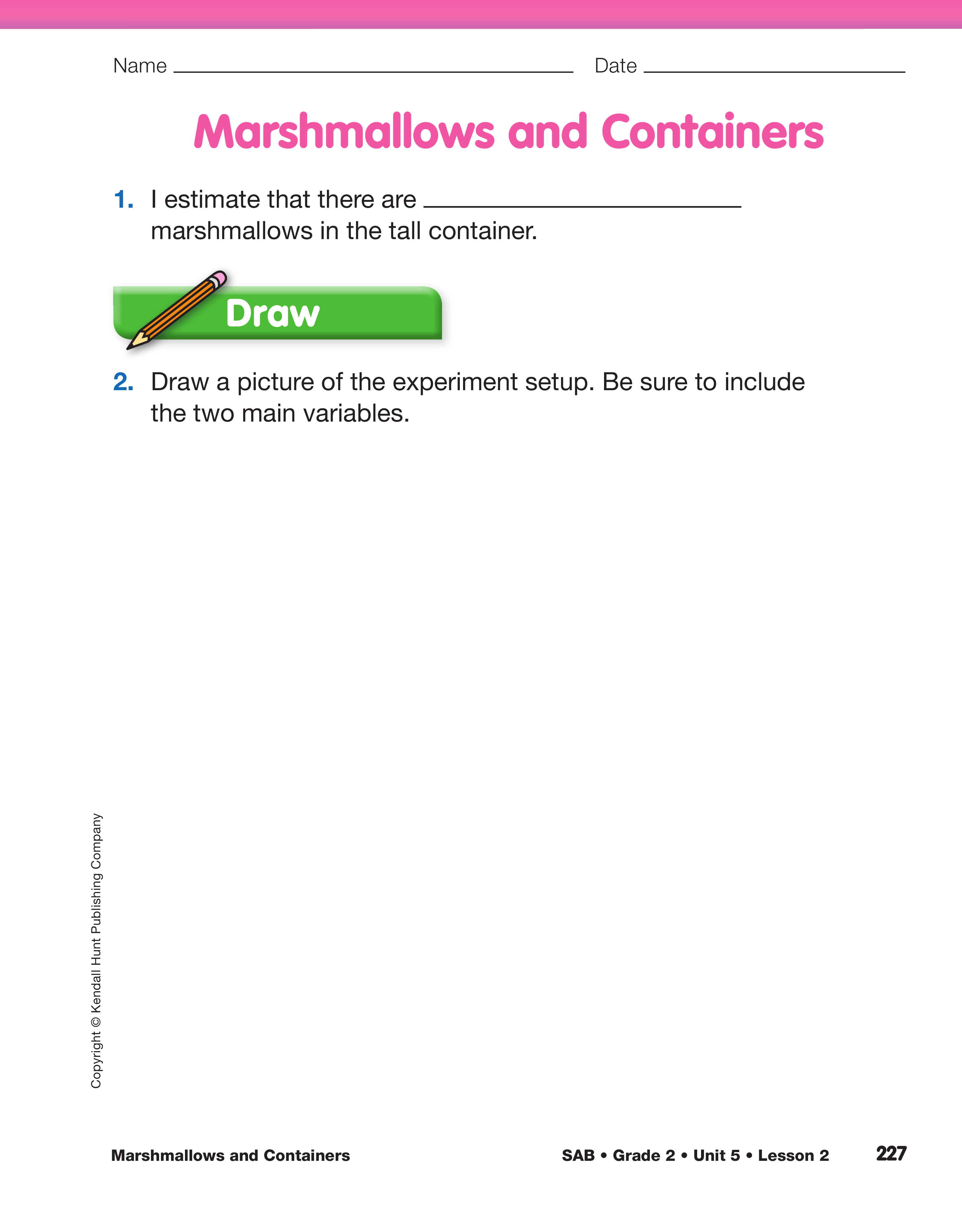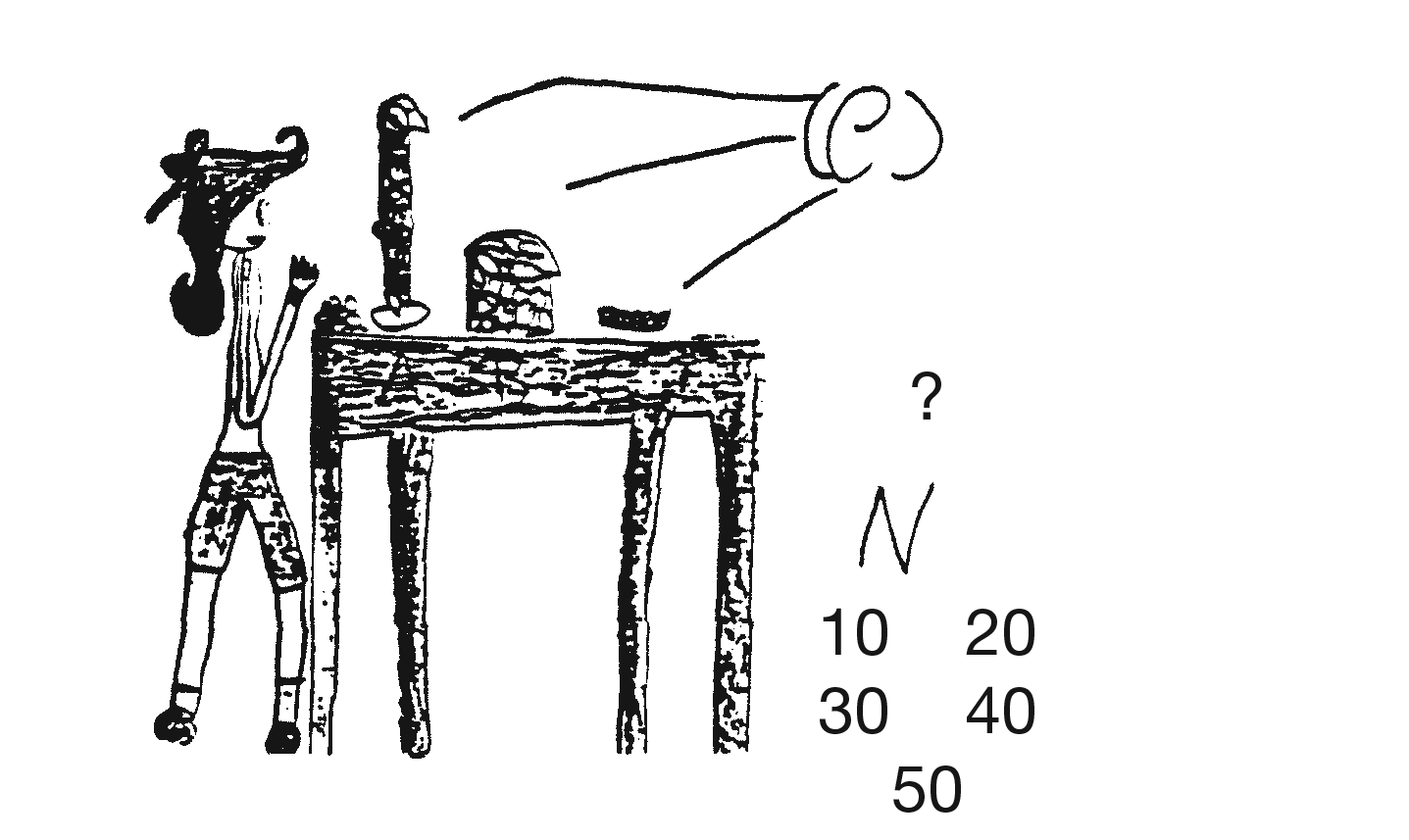Marshmallows and Containers
Est. Class Sessions: 2–3Developing the Lesson
Part 1: Introduce the Lab
Introduce Volume. Display containers of different shapes and the miniature marshmallows or beans you plan to use for the lab.
Ask:
If students suggest filling the containers with marshmallows, allow volunteers to place marshmallows, five or ten at a time, into each container. This will reinforce skip counting.
Introduce the term volume:
Hold up your referent bags of marshmallows.
Record students' predictions on chart paper. Ask students to record their estimate in Question 1 of the Marshmallows and Containers pages in the Student Activity Book as well. Explain that they will test their predictions during the lab.
Demonstrate Lab Procedure. Tell students they will use the TIMS Laboratory Method to complete this investigation. Before students begin, demonstrate and discuss the lab procedure.
Show students the miniature marshmallows and a set of three containers. Have students name each container for easy identification. For example, the names can be the actual names of the containers, such as the graduated cylinder, margarine tub, and ice cream lid. Students can name them cylinder, tub, and lid. Do not use labels like "biggest", "middle", and "smallest" because they imply volume or height and are misleading.
Discuss the variables that will be studied: the type of container (cylinder, tub, lid) and the number of marshmallows.
Discuss filling the containers. Demonstrate stuffing
marshmallows into one container and dropping them
into another. Ask students how they can fill the containers
so that everyone fills all three of their containers
the same way, so that the investigation is "fair."
The marshmallows should be dropped
Ask:
Draw Pictures. Ask students to draw pictures of the investigation using your demonstration as a guide. Although students will work in pairs, each student should draw a picture of the lab for Question 2 on the Marshmallows and Containers pages in the Student Activity Book. An example of student work is shown in Figure 1.
Identify the important lab elements when viewing student pictures. The pictures should identify the two main variables and show the procedure in some way so that another person can see how to do the lab.















